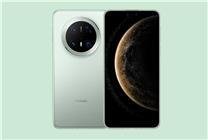Summary:
- Memory prices have surged, with DDR5 and especially DDR4 experiencing significant increases.
- Higher demand from AI servers and data centers is driving these price hikes.
- Current market conditions suggest buyers should hold off on purchasing memory modules.
The DIY hardware market has recently witnessed an alarming surge in prices, particularly within the memory sector. Reports indicate that memory, especially DDR4 and DDR5 models, has seen price increases of 50% or more. These trends have culminated in the discontinuation of many once-popular cost-effective models, forcing consumers to reassess their purchasing strategies.
To illustrate, let’s examine the case of DDR5 memory. Prior to the price escalation, consumers could acquire dual 16GB DDR5 kits for under 600 yuan. However, a dramatic shift has occurred, with prices now only allowing for the purchase of a single module at the same cost, often leaving consumers without options due to stock shortages. In light of the rapidly changing market, experts advise against making memory purchases, even with promotional events like Double 11 around the corner.
One of the primary drivers behind the surge in memory prices involves increased global investments in data centers and AI server infrastructure. The demand from these high-performance sectors vastly outstrips that of typical civilian markets. AI applications necessitate immense quantities of high-bandwidth, low-latency memory, prompting manufacturers to reallocate wafer production capacity towards enterprise-level memory, further constraining civilian availability.
Additionally, hoarding behavior among distributors has exacerbated the situation. As early as this year, forecasts suggested that memory production would increasingly favor AI servers. Many retailers and stockers anticipated the price hikes and began stockpiling memory supplies, thereby shrinking the available current stock for average consumers.
This price surge is not limited to DDR5; DDR4 has experienced a staggering increase, with costs skyrocketing by over 200% since early in the year. Forecasts from reputable institutions indicate that DDR4 shortages may persist until at least mid-2026. This expectation has prompted companies to follow suit, with some data center operators going as far as purchasing 80% of their projected annual usage in a single transaction.
Given these market conditions, it is prudent for consumers to exercise caution. The current price-performance ratio for memory components is unfavorable; investing in memory at these inflated prices may result in financial regret. Unless absolutely necessary, it is advisable to refrain from purchasing memory modules. The market is expected to stabilize, and waiting may ultimately yield better opportunities for consumers.
In summary, while promotional sales may seem enticing, the underlying economic forces driving memory prices suggest that potential buyers should hold off. With the market volatility and bloated price structures, patience could offer a more advantageous path moving forward.








